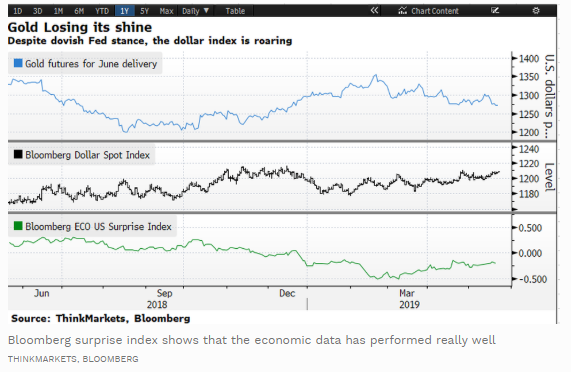One question on every investor’s mind is why the US markets remain in a bull market, particularly in the face of rising global trade volatility?
A trade war will not help the US or China, and the rest of the world will be caught in the line of fire. But US president Donald Trump is stubbornly determined that China will bend to his will. He may have picked a fight with the wrong country. In this case, the usual tactics of sanctions to make the government weak, followed by other measures to make the country comply, may not work.
This is China – the second biggest economy of the world. If she sneezes, the whole world catches a cold, so picking a fight with a country like this is clearly a blunder. But the Trump administration is in denial. For their own political reasons, they are extending the war and are willing to take it as far as they can.
Oddly, global markets aren’t paying much attention. After every few down days, we see the bulls coming back into the market pushing markets towards all-time highs. This has been the trend throughout the year.
For me, this doesn’t make sense, because the US markets aren’t cheap and don’t have access to cheap money anymore which was the primary reason behind the lengthy stock rally that we have seen.
So is this sustainable? Or are we going to see a recession in 2019?
Looking at the performance of the equity markets, it seems that the chances of a recession, sooner rather than later, are good.
In the year to date, the Nasdaq index has soared by 14.65%, the Dow Jones index has gained 8.66% and the S&P 500 index has climbed 11.79%. So, by looking at these solid gains, it doesn’t look like these markets are ready to move lower. But to measure bullish sentiment, one should also look to see how far off these markets are trading from their all-time highs.
The Nasdaq index is off by nearly 6.34%, the S&P 500 is 4.56% and the Dow Jones is down nearly 4.76% from its all-time high. This tells us that the stock market is solid and there are no signs of panic.
Another way to track uncertainty is to have a look at the Volatility Index (the VIX). It is down nearly 31.16% year to date, but it has recovered nearly 45% of its value from its lows in April 2019.
All of a sudden, the situation doesn’t look as rosy as it looked before.
Before we jump to any conclusions, let’s also have a look at one more safe haven asset. If there is anything cooking, we should see the gold price moving higher. The year to date gains for the yellow metal sit at 3.07%. This is despite the fact that the Federal Reserve has adopted a dovish stance towards its monetary policy.
One way to assess safe-haven demand is to measure the inflow and outflow of gold in exchange-traded funds. The SPDR Gold ETF has experienced its largest outflow since 2016, with an outflow exceeding $926-million in the first week of May alone. Having said this, the bleeding appears to have been stemmed: as of last week, the inflow was $120-million, which is better than the previous week’s outflow of $303-million. So, clearly, investors are hedging their bets.
I also like to look at the economic data and try to see how economic performance has been with respect to the forecast. This strategy gives a sense of the economic health of the country, because if a recession is going to hit, then the economic surprise index should start to roll to the downside. Comparing this particular index with the gold chart also gives another indication of how institutional investors are placing their bets.
The Federal Reserve in the United States intervened in 2007 when the financial crisis hit. But the Fed is usually behind the curve and market participants have it right most of the time. Therefore, the Bloomberg US Economic Surprise Index is helpful in this situation.
In the chart below, you can see that the economic data has performed well since March. Although the current reading is -0.18 (still in negative territory), the improvement in this index has been extremely strong. This is because, in March, the index was well below the -0.50 level. Also, the correlation between the gold price and the Economic Surprise Index since October 2018 has been negative – one goes up and the other moves lower.

This gives me reason for concern and factors like the trade war should not be taken lightly. The US markets are expensive, and the geopolitical conditions aren’t stable, so I think it is likely that we may see a recession soon especially if the economic numbers out of China aren’t true. DM
















 Become an Insider
Become an Insider